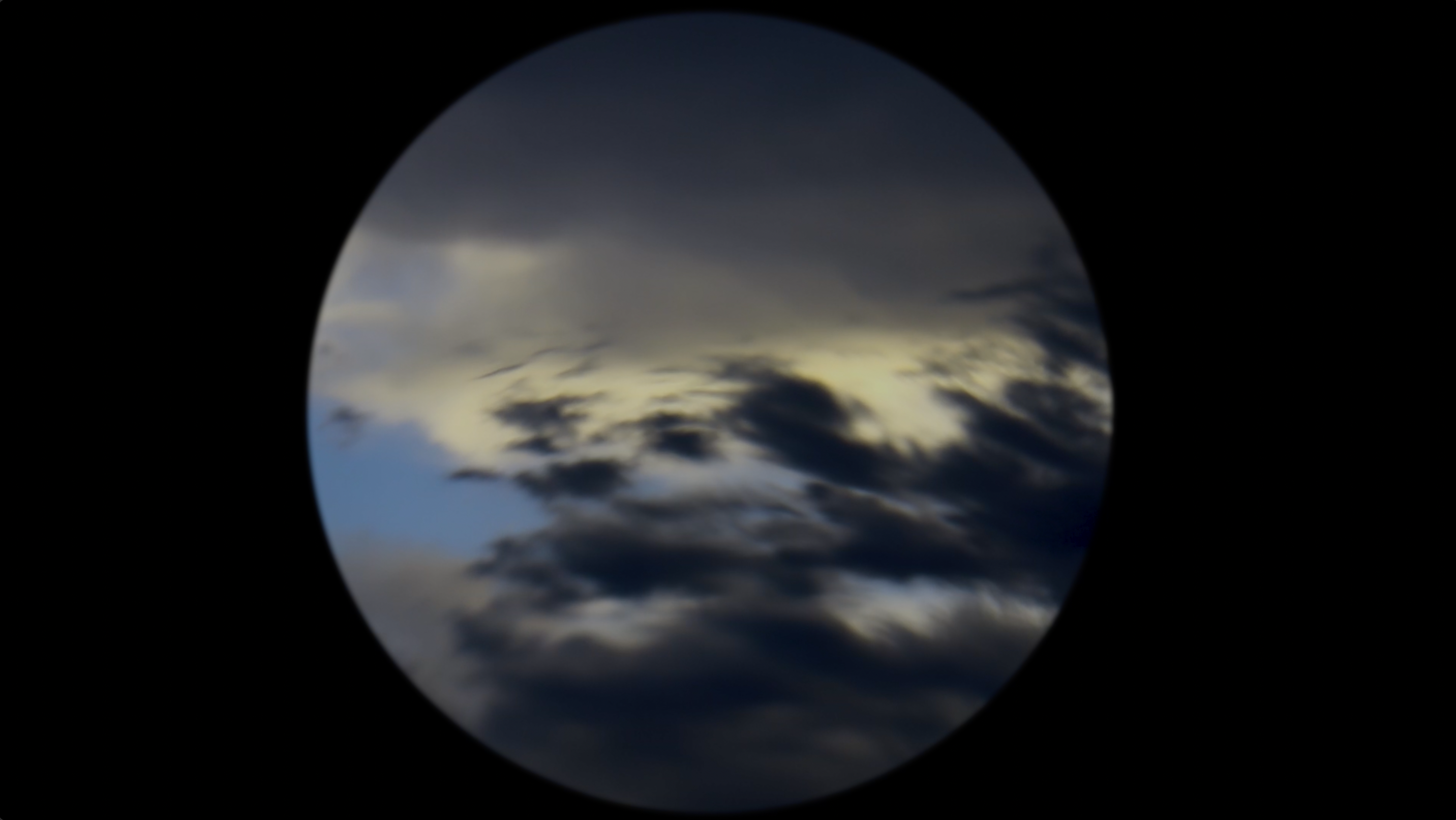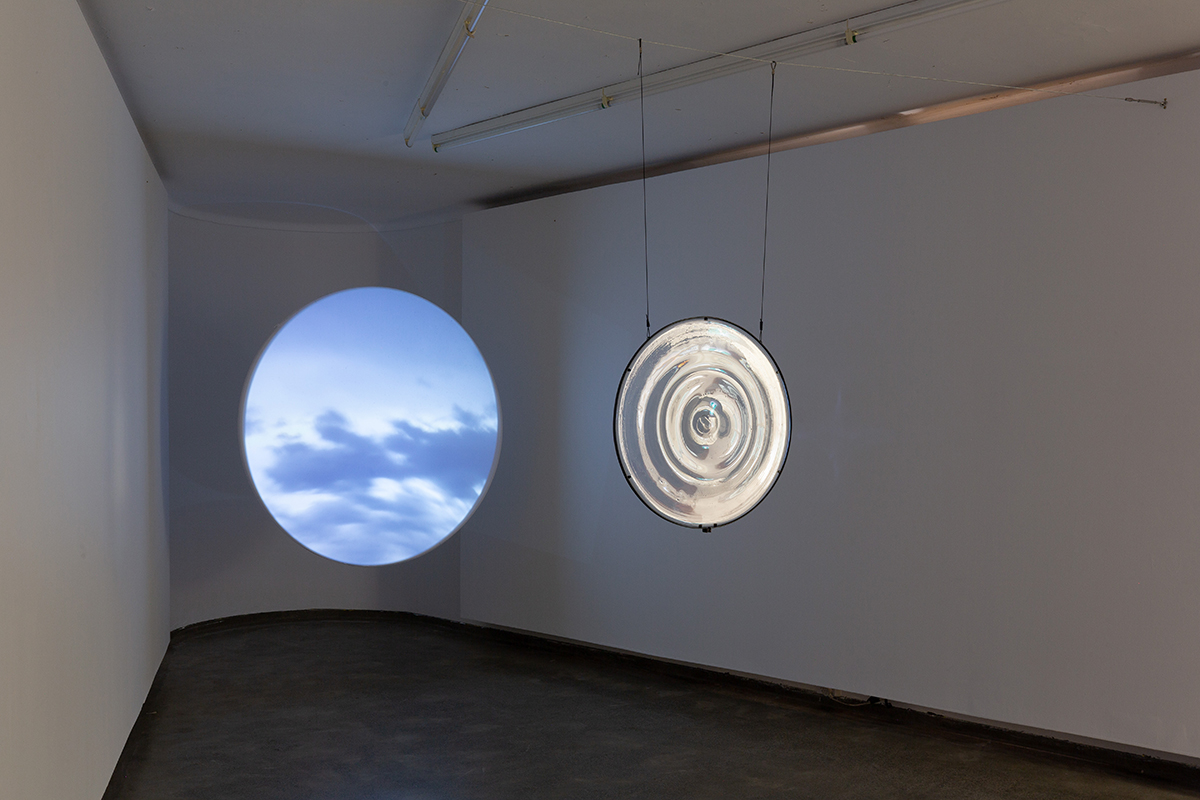Year Without a Sun
2023In 1815 Mount Tambora erupted on the Indonesian island of Sumbawa. Dense rock and superheated gases filled the sky, ash fell like snow, and vast quantities of sun-blocking particles circulated the planet, blown by stratospheric winds. By the following year, the Earth had cooled by an average of one degree Celsius sparking extreme weather events across the globe: social breakdown, crop failure, and widespread famine. This period of darkness stretched for three years from 1815–18, and is remembered in Europe as the ‘year without a summer’, but perhaps is better described as the years without a sun.
Year Without a Sun looks at the present through the lens of this historical climate crisis. In sculptural glass and film, the past catastrophe, caused by the eruption of Tambora, is reanimated as an eye through which we can view the environmental precarity of the present. Here, black volcanic sand from Tambora has been melted and shaped into a series of glass optical lenses. In these works, history has been given a form that is both tangible and transparent. Filming through these lenses, Australia’s recently unseasonable wet weather has been documented, mobilising the past to inspect the present.
Two centuries after the eruption of Tambora, humanity once again finds itself in the midst of a climate crisis – but this time it is a catastrophe of its own making. Where Tambora plunged the global temperature by 1 degree, the 21st century will be defined by its contemporary reversal, forecasting at least 1.5 degrees of warming. Marking the end of a three year period of sunless weather during La Niña, Year Without a Sun explores Tambora as a climatic case study, lens, and urgent warning.



Exhibition documentation courtesy of Jessica Maurer